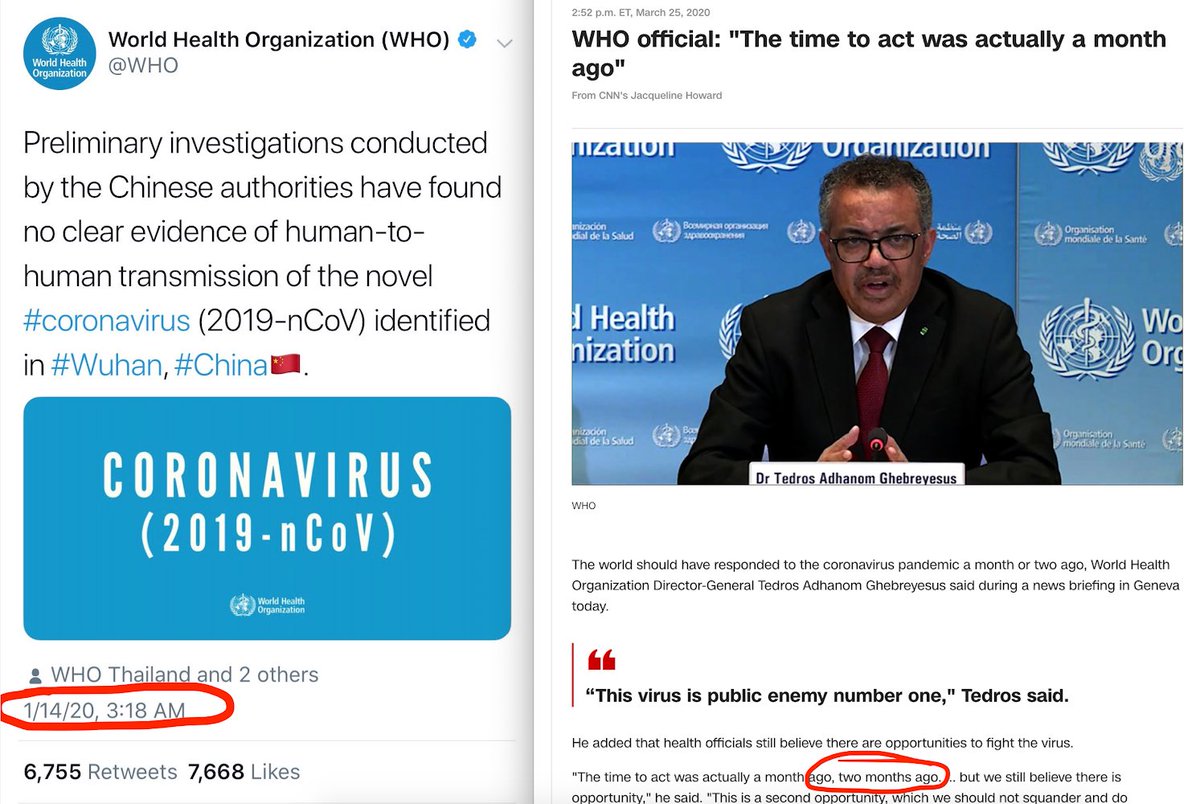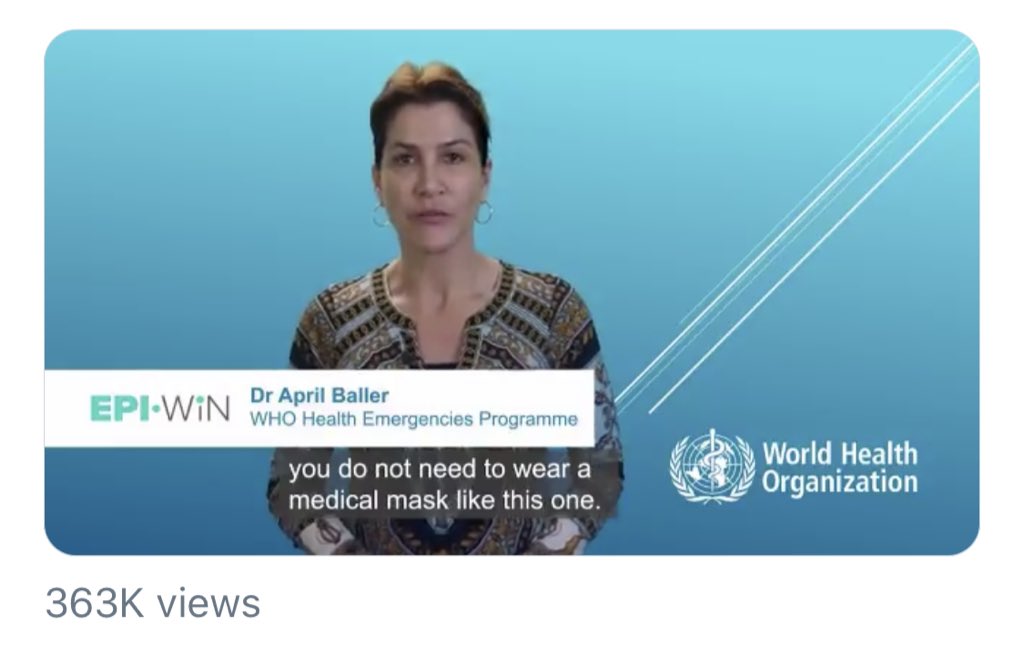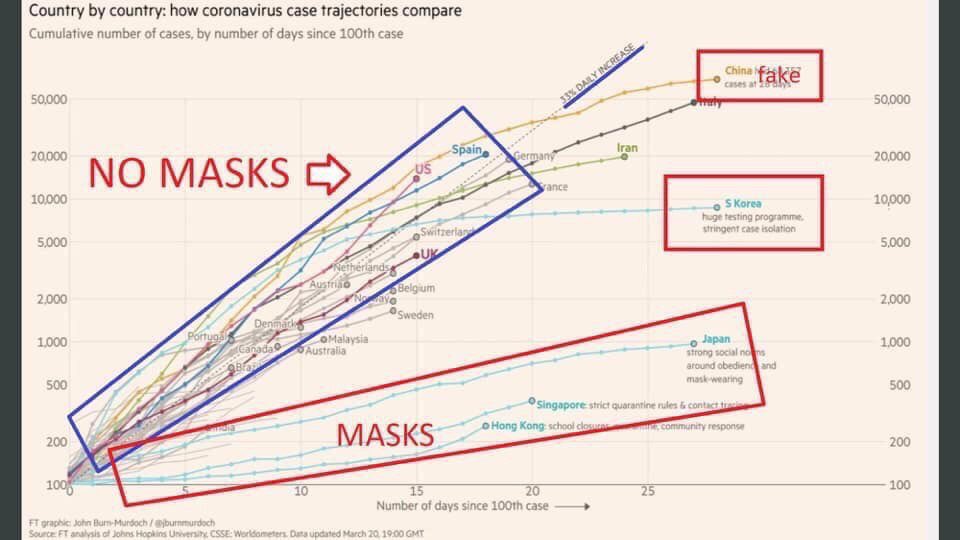WARTIME EPISTEMOLOGY
1/x
Information sources have 3 levels:
LEVEL 1 — Institutional. Certifies incredibly obvious things once they become incredibly obvious. Before things are incredibly obvious, institutions are often wrong or downright misleading.
1/x
Information sources have 3 levels:
LEVEL 1 — Institutional. Certifies incredibly obvious things once they become incredibly obvious. Before things are incredibly obvious, institutions are often wrong or downright misleading.
2/x
LEVEL 2 — Credible/Useful. Comes from credible individuals who have proven NOT beholden to institutional narratives. Ideally, at least 75% of prep action is based on information of this level of obviousness or below.
COVID19 @ScottGottliebMD
PREP: @jonst0kes
ECON: @RaoulGMI
LEVEL 2 — Credible/Useful. Comes from credible individuals who have proven NOT beholden to institutional narratives. Ideally, at least 75% of prep action is based on information of this level of obviousness or below.
COVID19 @ScottGottliebMD
PREP: @jonst0kes
ECON: @RaoulGMI
3/x
LEVEL 3 — Exploratory. The best information arrives here first, hidden in a vast stew of bullshit. But it is always here first. Anonymous message boards, conspiracy discussion forums, etc. I do have some good leads in this department (available upon request).
LEVEL 3 — Exploratory. The best information arrives here first, hidden in a vast stew of bullshit. But it is always here first. Anonymous message boards, conspiracy discussion forums, etc. I do have some good leads in this department (available upon request).
4/x
Level 3/Exploratory information is valuable in "surprise reduction."
Everything is already uncertain.
Nobody, no matter how expert, knows "what& #39;s really going on" or "how it& #39;s all going to go."
Even if they did, you or I would have no particular reason to believe them.
Level 3/Exploratory information is valuable in "surprise reduction."
Everything is already uncertain.
Nobody, no matter how expert, knows "what& #39;s really going on" or "how it& #39;s all going to go."
Even if they did, you or I would have no particular reason to believe them.
5/
UNCERTAINTY IS INEVITABLE.
SURPRISE ISN’T.
We can familiarize ourselves early with a wide variety of hypotheses, so that if confirmatory evidence for any of them starts to pile up, we don& #39;t need to spend time adjusting emotionally and shaking ourselves out of disbelief.
UNCERTAINTY IS INEVITABLE.
SURPRISE ISN’T.
We can familiarize ourselves early with a wide variety of hypotheses, so that if confirmatory evidence for any of them starts to pile up, we don& #39;t need to spend time adjusting emotionally and shaking ourselves out of disbelief.
6/
In a crisis, “what’s really true” matters MUCH LESS.
Read that again.
TRUTH matters LESS in a crisis.
History can debate “what really happened” over the next thirty years.
But we need to act now.
So the most important question for us is this:
In a crisis, “what’s really true” matters MUCH LESS.
Read that again.
TRUTH matters LESS in a crisis.
History can debate “what really happened” over the next thirty years.
But we need to act now.
So the most important question for us is this:
7/
The question that matters for us, in the midst of a crisis:
1) What COULD BE true?
Followed closely by:
2) How much could it hurt?
3) How can we reduce that hurt?
4) Is it worth it to do that right now?
The question that matters for us, in the midst of a crisis:
1) What COULD BE true?
Followed closely by:
2) How much could it hurt?
3) How can we reduce that hurt?
4) Is it worth it to do that right now?
8/
Example: “Masks are important for everyone, not just doctors”
1) In my judgment, how likely is this to be true?
(80%)
Example: “Masks are important for everyone, not just doctors”
1) In my judgment, how likely is this to be true?
(80%)
9/
2) If I& #39;m wrong, what are the chances of something terrible happening —dying, infecting someone, losing all my money, etc.?
(10-20% at least, especially if I’m in a big city)
2) If I& #39;m wrong, what are the chances of something terrible happening —dying, infecting someone, losing all my money, etc.?
(10-20% at least, especially if I’m in a big city)
10/
3) How much would it cost to reduce this likelihood, so that it doesn& #39;t matter whether I& #39;m right or wrong?
(The cost of a mask — maybe $40 at this point for a solid N95 until someone makes more)
3) How much would it cost to reduce this likelihood, so that it doesn& #39;t matter whether I& #39;m right or wrong?
(The cost of a mask — maybe $40 at this point for a solid N95 until someone makes more)
11/
4) Is significantly reducing the answer to #2 worth the cost in #3?
(Yes. I& #39;d pay $40 to reduce the chance of something terrible happening from 10-20% to much, much lower.)
4) Is significantly reducing the answer to #2 worth the cost in #3?
(Yes. I& #39;d pay $40 to reduce the chance of something terrible happening from 10-20% to much, much lower.)
12/
So there you have it. If you take away one thing, make it this:
When time-sensitive action is required, think of information in terms of “likelihood vs cost of being wrong.”
“Facts vs myths” is for historians and spoiled whiners. That’s not us — not anymore.
 https://abs.twimg.com/emoji/v2/... draggable="false" alt="🙏" title="Folded hands" aria-label="Emoji: Folded hands">
https://abs.twimg.com/emoji/v2/... draggable="false" alt="🙏" title="Folded hands" aria-label="Emoji: Folded hands">
So there you have it. If you take away one thing, make it this:
When time-sensitive action is required, think of information in terms of “likelihood vs cost of being wrong.”
“Facts vs myths” is for historians and spoiled whiners. That’s not us — not anymore.

 Read on Twitter
Read on Twitter





